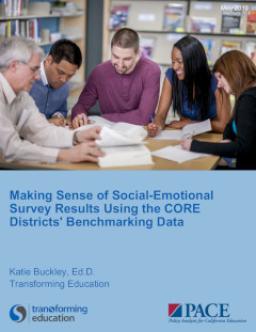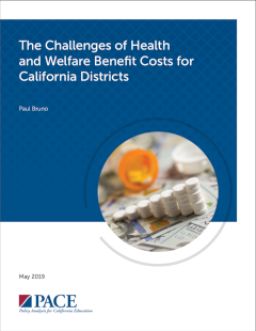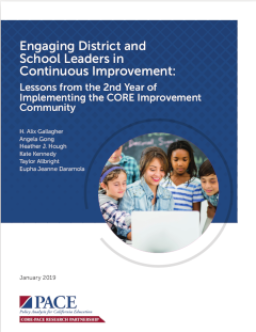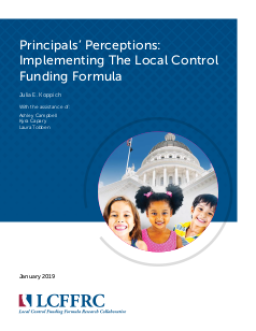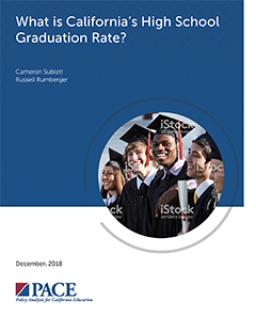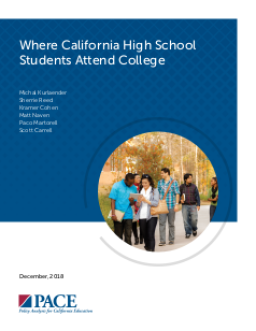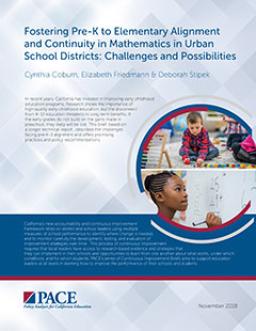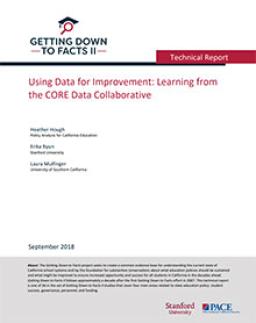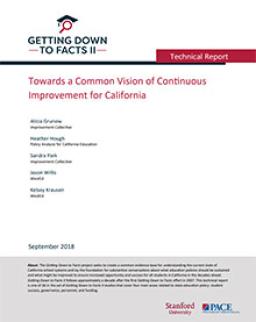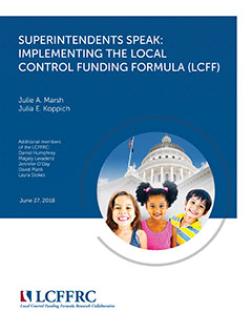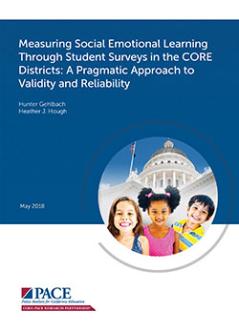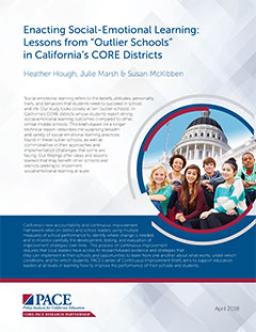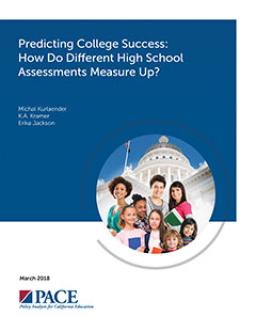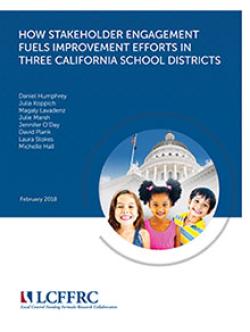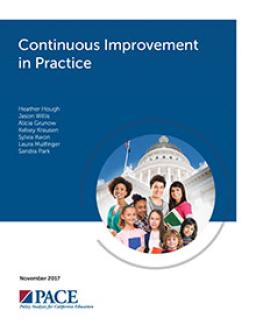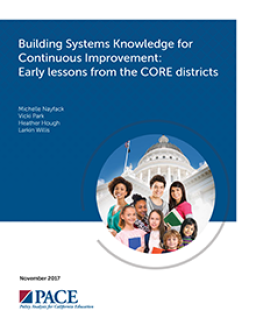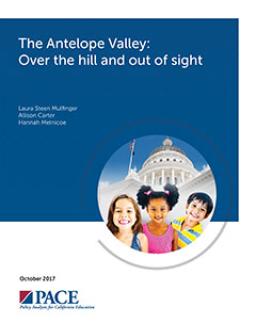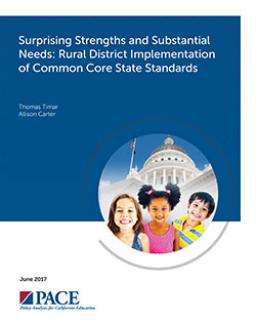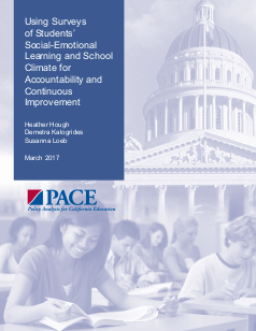Summary
This report presents benchmarking data on self-report student surveys measuring social-emotional learning (SEL) from nearly half a million students in grades 4 through 12 across 8 CORE districts in California. The data provide means and standard deviations by construct, grade level, and subgroup, and can serve as a proxy for a nationally-normed sample for other schools across the country looking to administer the CORE survey.
Summary
This report highlights the challenges that California’s school districts face due to increasing employee health benefit costs, including retiree benefits. Such costs strain district budgets, making it harder to address other priorities, like increasing teacher salaries or supporting disadvantaged students. The brief suggests that districts must navigate these costs more effectively, with potential help from state policymakers, to ensure they are sustainable and not left as unfunded liabilities.
Summary
Summary
Summary
Summary
This report is the companion account of principal survey results from the Local Control Funding Formula Research Collaborative's (LCFFRC) fall 2018 surveys of stratified random samples of California superintendents and principals. The superintendent results were published in June 2018 in Superintendents Speak: Implementing the Local Control Funding Formula.
Summary
This report examines the challenges and limitations of using the Four-Year Adjusted Cohort Graduation Rate (ACGR) to measure high school graduation rates in California. Graduation rates serve different policy goals, and the requirements for a high school diploma vary widely. The ACGR does not account for students' characteristics, those who graduate in five or six years, or those who change schools. The report recommends addressing these issues by developing a more comprehensive graduation rate that accounts for different student populations and their paths to graduation.
Summary
Summary
Summary
Summary
Effective data use is crucial for continuous improvement, but there is confusion about how it differs from data use for other purposes. This report explains what data are most useful for continuous improvement and presents a case study of how the CORE data collaborative uses a multiple-measures approach to support decision-making.
Summary
CA is shifting the responsibility for school improvement to local school districts with County Offices of Education playing a supportive role. The focus is on local leaders driving educational improvement and ensuring quality. Strategic data use is central to the implementation of this policy, with questions remaining about what data is needed, by whom, and for what purpose. This paper provides a framework for how data use for improvement is different from data use for accountability and shares lessons from the CORE Data Collaborative on how to use data for improvement in networked structures.
Summary
Summary
Summary
Summary
This study explores ten "outlier schools" in California's CORE districts that have strong social-emotional learning outcomes. The brief and infographic summarize the various practices found in these schools and the common implementation challenges faced. The findings offer lessons that can help other schools and districts implement social-emotional learning at scale.
Summary
Summary
Summary
Summary
Summary
Many parts of California, particularly rural and desert areas, are often overlooked by policymakers and researchers, despite the growing number of students attending school there. The Antelope Valley region has seen steady increases in student enrollment, particularly of Hispanic/Latino(a) and African American students, English learners, and foster youth. This report highlights the needs of the Antelope Valley Union High School District and its feeder districts, and calls for greater focus on supporting high-needs populations outside of urban centers.
Summary
Summary
Summary
The use of social-emotional learning (SEL) and school culture/climate (CC) measures is a promising way to understand school performance. SEL and CC measures are reliable, distinguish between schools, and relate to academic and non-academic measures. They can identify areas for improvement within schools, such as subgroup gaps. Incorporating these measures into higher stakes accountability systems requires further research.
Summary
California is implementing four new policy initiatives for education, including the Common Core State Standards and a new accountability system. PACE provides research-based information to help drive continuous improvement in schools. Alternative schools are available for vulnerable students, but the current accountability system does not adequately address their needs. The California Department of Education is considering the development of a new accountability system for alternative schools that aligns with Local Control Accountability Plans.
